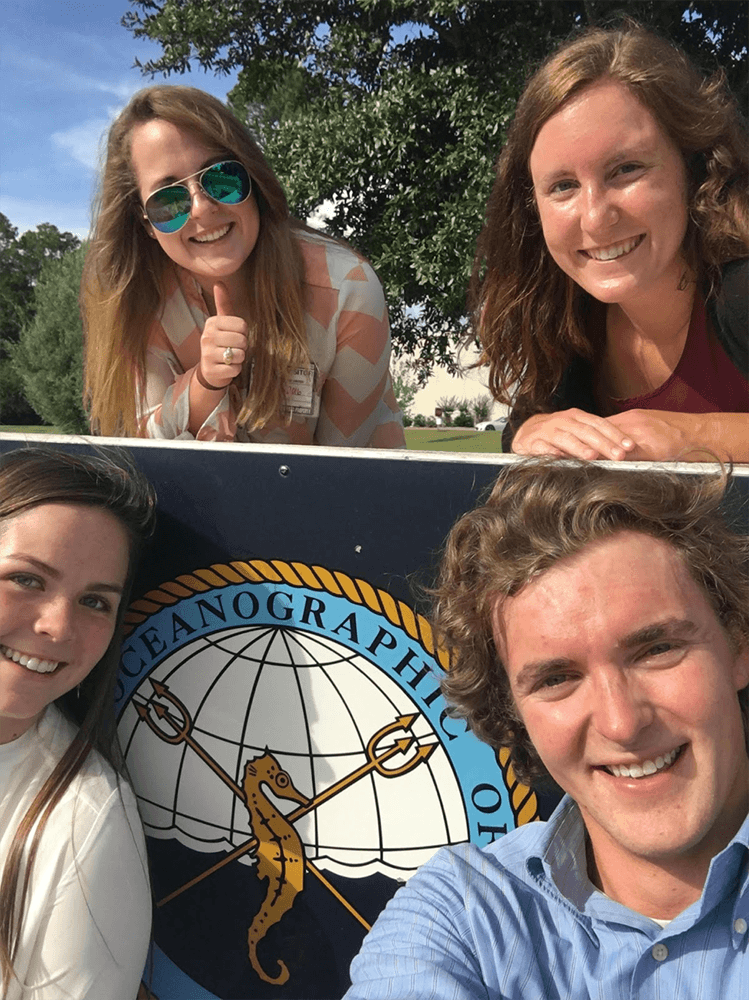For three sweltering months this summer, Lauren Replogle called the Naval Oceanographic Office home.
A Texas A&M Department of Oceanography graduate student, Replogle worked in the oceanographic office, which plays a role in ocean forecasting and protecting U.S. assets and personnel, through an internship with the United States Navy in Mississippi.
“The goal of that department is to provide global ocean forecasting capability using the Navy ocean circulation models/hydrodynamic wave ocean circulation numerical models,” Replogle said. “Using those models, they analyze and forecast ocean properties for the U.S. Navy.”
Scientists within the department run and maintain the ocean models, collect and quality-control ocean observing data sets, and prepare forecasting products that align with the Navy’s mission objectives.
“They also develop and maintain data basis of oceanographic observations and collect observations on oceanographic service ships that deploy oceanographic sensing devices such as gliders, profiling floats and buoys,” she explained.
As a student in the Science, Mathematics, And Research for Transformation Defense Scholarship for Service Program (SMART), a STEM-focused Department of Defense program for undergraduate and graduate students, an internship was a requirement for Replogle.
“Different facilities within the Department of Defense hand-pick students who align with that facilities’ mission or goal,” she said. “The Department of Defense will then pay for your education, and then however many years they pay for, you work that amount of years back.”
New Oceanography Degree Prepares Students To Tackle Challenges Facing The World’s Oceans
She was introduced to the program simply by walking the halls of the O&M Building, seeing a bulletin-board flyer and then consulting with Dr. Don Conlee, an Atmospheric Sciences professor, about the opportunity. Students apply for the program just as they would any other scholarship.
“I was selected to work for the Naval Oceanographic Office within the program,” said Replogle. “That office will provide funding for my master’s degree, and then following that I will work two years of service in the Navy.”
Although two years are required, Replogle plans to continue working there after those are over. “It’s something that I really enjoy and it makes me feel like I am contributing to society and the protection of the country through the same goal as the military,” she said.
For undergraduates hoping to follow in her footsteps and attend graduate school, Replogle had this advice: “find a professor with your research interest and ask to work under them so you can get experience in researching; and, participate in undergraduate research scholars.”
Replogle graduated in 2016 with a bachelor’s of science in meteorology, with a minor in oceanography, from Texas A&M. Her undergraduate education helped her this summer, she said.
“By taking classes such as ocean observing systems and data methods in geosciences, as well as my background in meteorology and understanding how coupled atmospheric ocean models work, it gave me a full understanding of how to produce products that fit the objectives of the U.S. Navy.”
One of the most important things Replogle learned this summer was “how hard both uniformed and civilian people work to keep the country safe through oceanographic information.”
###
This story by Taylor Fuechec originally appeared in Geosciences News.





